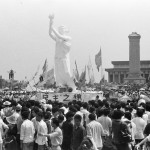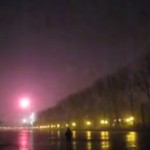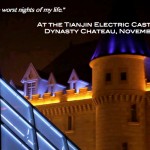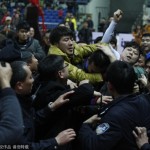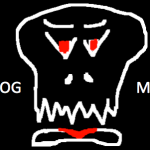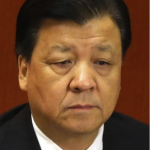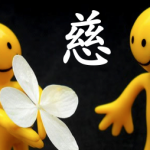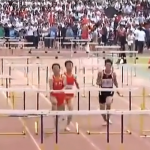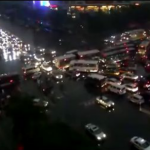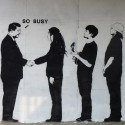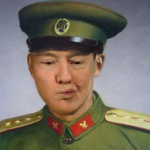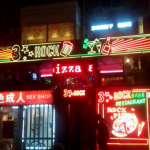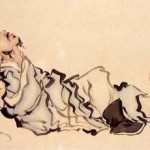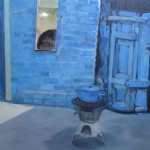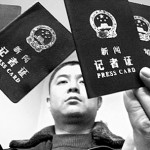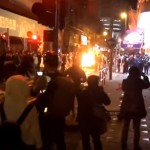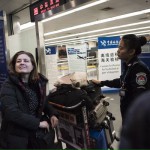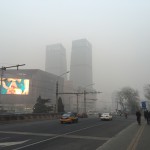The short film Battle (above, with English subtitles) offers viewers a perspective of Uyghur life in major Chinese cities outside of Xinjiang. Having lived in Northwest China for extended periods, it was striking to see how evocative it is of life for Uyghurs outside of their homeland.
Last week, on a 24-hour layover in Shanghai, I met five Uyghurs and one Uzbek. The first couple I ran into was at the base of the Oriental Pearl TV Tower bargaining for student-priced tickets to the 220 yuan observation deck. The young man and his young girlfriend were from Uzbekistan and Ürümchi, respectively; he was a non-matriculated student at a local Shanghai university and she lived in Shanghai with her family. Judging by the amount of jewelry and makeup she wore under her floral headscarf, she was just getting to know and impress her Uzbek suitor. They were an interesting pair, helping each other negotiate in a Chinese world.
The next trio of Uyghurs I met were selling hashish in whispered voices on the streets of the French Concession. A middle-aged family man, a young man with a whispery mustache, a wiry scar-faced man with hooded eyes: the three walked without the swagger and bravado of American drug-dealers. There was a quiet toughness to them; a caginess.
The final Uyghur I met in my 24 hours was a hawker I’ll call Adiljan. He was selling walnuts and dried dates or jujube (hong zao) from the back of a three-wheeled bike. As he filled a bag with the fruit from Hotan we talked about his hometown on the outskirts of Kashgar. Passersby gave us long glances. While I was giving him my contact information a police van pulled up across the intersection. Adiljan whispered, “chengguan.” The last time I saw Adiljan he was pumping his pedals furiously 300 meters down the road, then he turned right and disappeared.
The Uyghurs I met in Shanghai were living in a socioeconomic gray zone. In order to survive they were working in the unsanctioned informal economy. Based on my brief encounters with them they were forming transnational Muslim-to-Muslim relationships; negotiating their positions as hyper-connected youth, as non-Han and migrants. Although they were dislocated they still depended on their translocal roots and routes to and from small towns at the opposite end of the country.
These encounters reminded me of Battle (rendered in Uyghur as jidel, or “disturbance”), made by a young Beijing Film Academy student named Wen Muye and produced by the famous Fifth Generation director Tian Zhuangzhuang. In this fictional film, a Uyghur named Adil, who works as a waiter at the Āmānnisā Khan Uyghur restaurant in Beijing, is confronted first by the Islamic convictions of his father and then the profiling of police officers. Over the course of the 11-minute story we see Adil come to realize that joining the underclass of displaced toilers in the city does not mean disrespecting where he came from. This move is carefully amplified by the filmic soundscape: from thumping Spanish-language hip-hop and scenes of Beijing street culture to melancholic Spanish folk-protest music and the scar of an erased-tattoo (is it Victor Jara?).
Although the key conflict — a tattoo of the word “Battle” spread across the upper back of Adil — is a bit exaggerated (actually, many Uyghur men have tattoos), the message of struggle, insecurity, and ambivalence is dead on. Of course, profiling by chengguan and police in China’s major cities is not limited to Uyghurs struggling to get by, but the suspicions they encounter and absolute inability to “pass” as someone entitled to Ham privilege is something only they and a few other minorities from the North and West encounter.
This film, which won “Best Director” and a “Special Jury Prize” in two Beijing film festivals in 2013, was perhaps too incisive and accurate in its portrayal of reality. Judging by the number of broken links, like so many critical Chinese voices, it appears as though the film is in the process of being harmonized.
Beige Wind runs the website The Art of Life in Chinese Central Asia, which attempts to recognize and create dialogue around the ways minority people create a durable existence, and, in turn, how these voices from the margins implicate all of us in simultaneously distinctive and connected ways.







